Rickety Lifts and Hidden Staircases I: Pietro Cavallini at Santa Cecilia in Trastevere.

One of my very favourite things to do is to give somebody (ideally a diminutive nun of an entirely indeterminate age, though this isn’t a deal-breaker) a couple of euros in return for being ushered into an improbable lift, or perhaps up or down a creaking staircase to see something long since hidden.
Santa Cecilia is absurdly exquisite, it sits in a picturesque courtyard with a bubbling central fountain and cascades of bougainvillea. It is part of an active convent of Benedictine nuns and the church dates to the ninth century. It was built above the house of St Cecilia by Pope Pascal I (817-24) and is the product of the renovatio––a sort of mini-Renaissance–a brief period of relative peace in the turbulent centuries of the deepest, darkest Middle Ages. Support offered to the territories ruled by the besieged Roman Church by the Frankish kingdom provided a moment of military and political stability which was accompanied by a burst in prosperity.
So it was that a spate of church building began in Rome, including the church of Santa Cecilia in Trastevere. The history of art is far less airy-fairy than popular prejudice sometimes suggests. It is, after all, simply the history of economics and politics written in matter: who built or decorated what? Why? Where did they get the money from? Who was their intended audience?
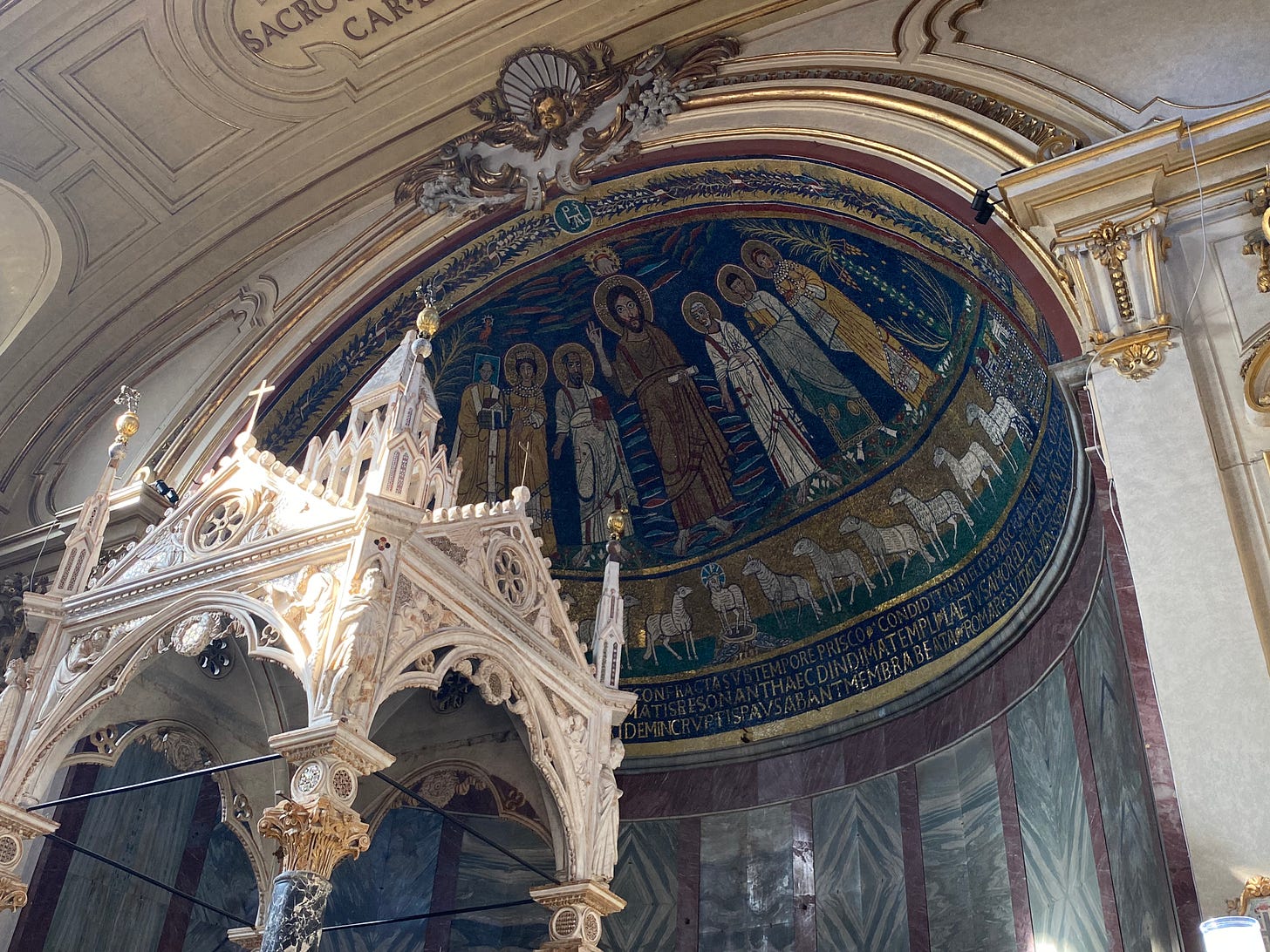
Pope Paschal built this church as part of a surge in church building which gloried the early martyrs: Charlemagne was the new Constantine; the renovatio was an echo of the Golden Age of the early Church. Contemporaneously, in Costantinople, edicts of iconoclasm saw out of work mosaicist monks flocking to Rome where their talents fell on fertile ground. The mosaics in the apse at Santa Cecilia are testament to this. Unlike various phases of fresco decorations of the church they survive because mosaic has a significant intrinsic value: the materials used are expensive and are less likely to be blithely disposed of when deemed old hat.
No such scruples governed the preservation of paintings, and in the late thirteenth century Pietro Cavallini was called in to paint new frescoes in the church. Pietro Cavallini is not nearly as famous as he should be. He was a Roman contemporary of Giotto, and certainly no less skilled, but considerably less celebrated today. He also lived, we are told, “to be a hundred years old and never wore a hat” which always rather endears me to him. I imagine even in the very early fourteenth century, as the papacy retreated to Avignon and one of the grimmest centuries in European history began, as he went out without suitable protection against the elements he was tutted at by Roman ladies of a certain age.
The frescoes painted by rakish, hatless Cavallini would in turn fall victim to a sixteenth century remodelling which, in response to the Council of Trent, created a choir loft where the closed order of nuns of could participate in the Mass without being seen. The scene of the Last Judgement which Cavallini had painted on the counter-facade (the inside of the entrance wall) would be in part demolished and in part walled into the new choir loft, created by dividing the full height of the wall into two levels.

I can vividly remember being told of the then recent and painstaking restoration of these frescoes in a classroom on George Square at Edinburgh University sometime in the last fin de siècle. It was a five o’clock class on a dreich winter’s evening and already night outside; frescoes lurking in a choir loft among bougainvillea in Rome seemed very appealing indeed.
Next time you’re in Trastevere make a beeline for Santa Cecilia. To the left of the church is a bell next to a battered green door. Ring it and you’ll be buzzed in. Give the lady €2.50 and she’ll point you to the wood-effect lift redolent of a 1970s apartment building. A very small, very old, nun used to accompany visitors, now if you seem to know where you’re going you’re sent up on your own. Though this is rather more relaxing, the nun is a nice touch. For the purposes of dramatic effect we shall therefore imagine her in the lift with us, emanating silent disapproval.
After this awkward ride we arrive at the first floor where the lift doors open on the side adjacent to those by which you entered. A mildly disorienting twist that befits travel through time. Emerging from the lift, one takes a couple of steps straight ahead up to the choir (from where there is an excellent view down into the church itself, spying through the grille which hid the closed order from the congregation).
Opposite this grille we come face to face with Cavallini’s figure of Christ in Judgement, once high above the ground and never intended to be seen from this close. Christ is flanked by angels (their wings apparently designed by Missoni) and apostles and is sternly impassive, enthroned in a jewelled throne from which his wounded right foot emerges. His right hand also overlaps the throne (after all who says Giotto single-handedly restored perspective to painting?): even the Almighty obeys the laws of physics, we are told.
Frescoes are painstakingly planned: first the sinopia (a red pigment used for the sketch upon which the painting will be done) is drawn directly onto the base level of plaster, the arriccio. A decision is made about how much will be painted in the three or four hours that the intonaco (final layer of plaster into which the paint is applied) is still tacky and it is applied to the corresponding area. This area is called a giornata (“a day’s work”). The divisions of these giornate can be identified by studying the surface of the fresco with grazing light.
Arguably Cavallini’s most significant development in fresco painting can be seen in the faces of his angels: each face is a single giornata, painted in one go and lending it a sense of naturalism. The surviving figures of Cavallini’s Last Judgement are conceived as organic and cohesive; the faces of his angels are not simply pigment in plaster. On either side, festooned with ropes for the opening and closing of the windows high above, the apostles each have very distinct features and expressions, and they are shown sitting at a slight angle. Once again we are told that the realm of the divine follows the same laws of matter as our world, even if they do bear gilded halos (moulded in plaster and projecting from the wall).
The stuttering birth of what we call the Renaissance is not to be seen in one painting, one moment, or one artist. People like labels–taxonomy makes us feel like we have a grip on the fleeting and ungraspable nature of time–and though labels are useful, up to a point, it pays to be aware of their limitations. After all Cavallini didn’t know that at Santa Cecilia he would set down one of the tangle of roots that would herald the first whisperings of the Renaissance.
The exquisitely solemn faces of his angels and the solidity of his apostles with their earnest expressions seek to bring us a step closer to the divine. They are a little less “other”; a little more terrestrial. This revolutionary moment of the history of art is lurking behind a battered door in an idyllic courtyard in Trastevere just waiting for you to take the improbable lift and go and have a look.
Cavallini Frescoes
Santa Cecilia in Trastevere,
piazza Santa Cecilia
Mon-Sat 10am-12.30pm, Sun 11.30am-12.30pm
€2.50 per person




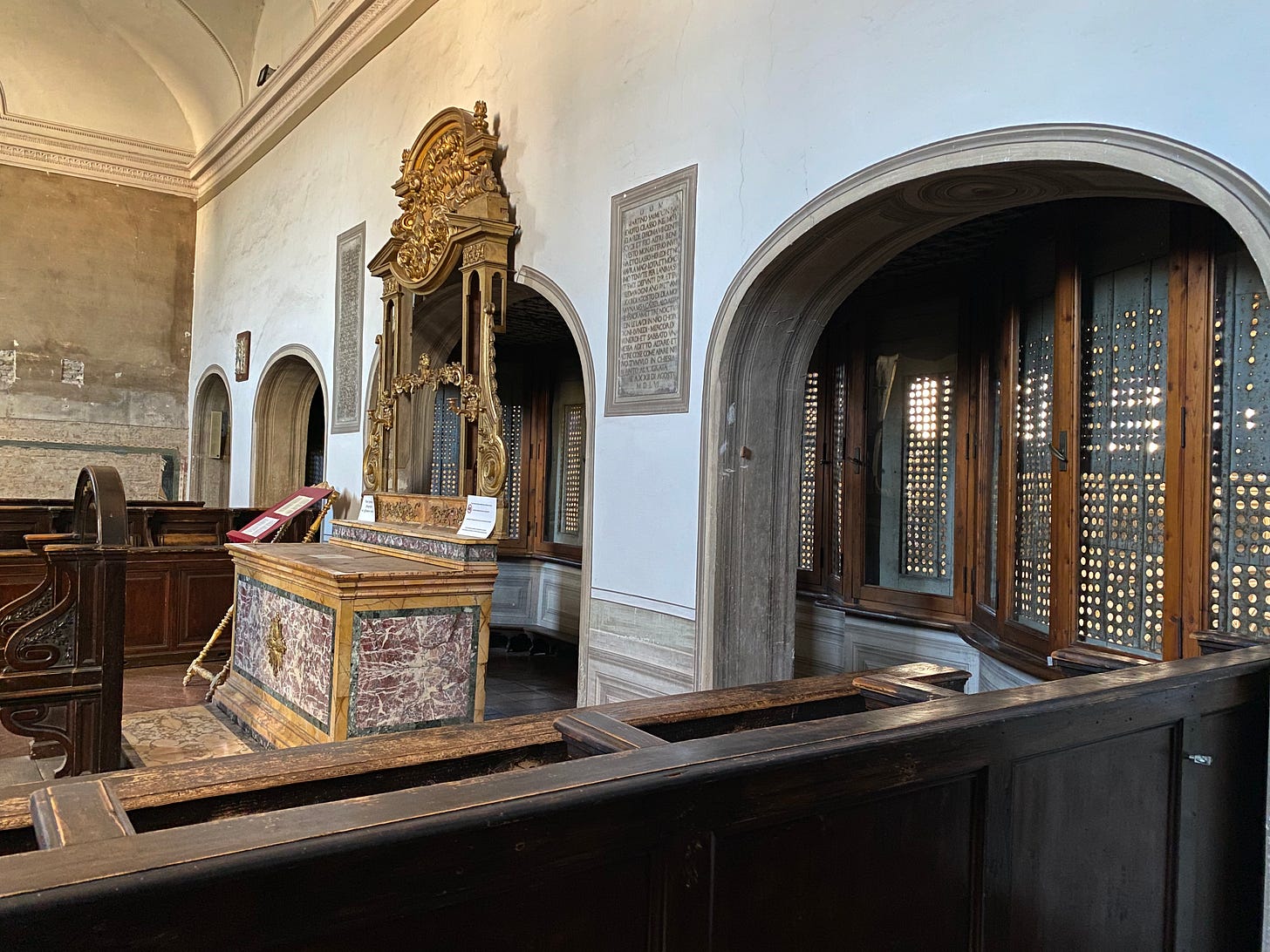
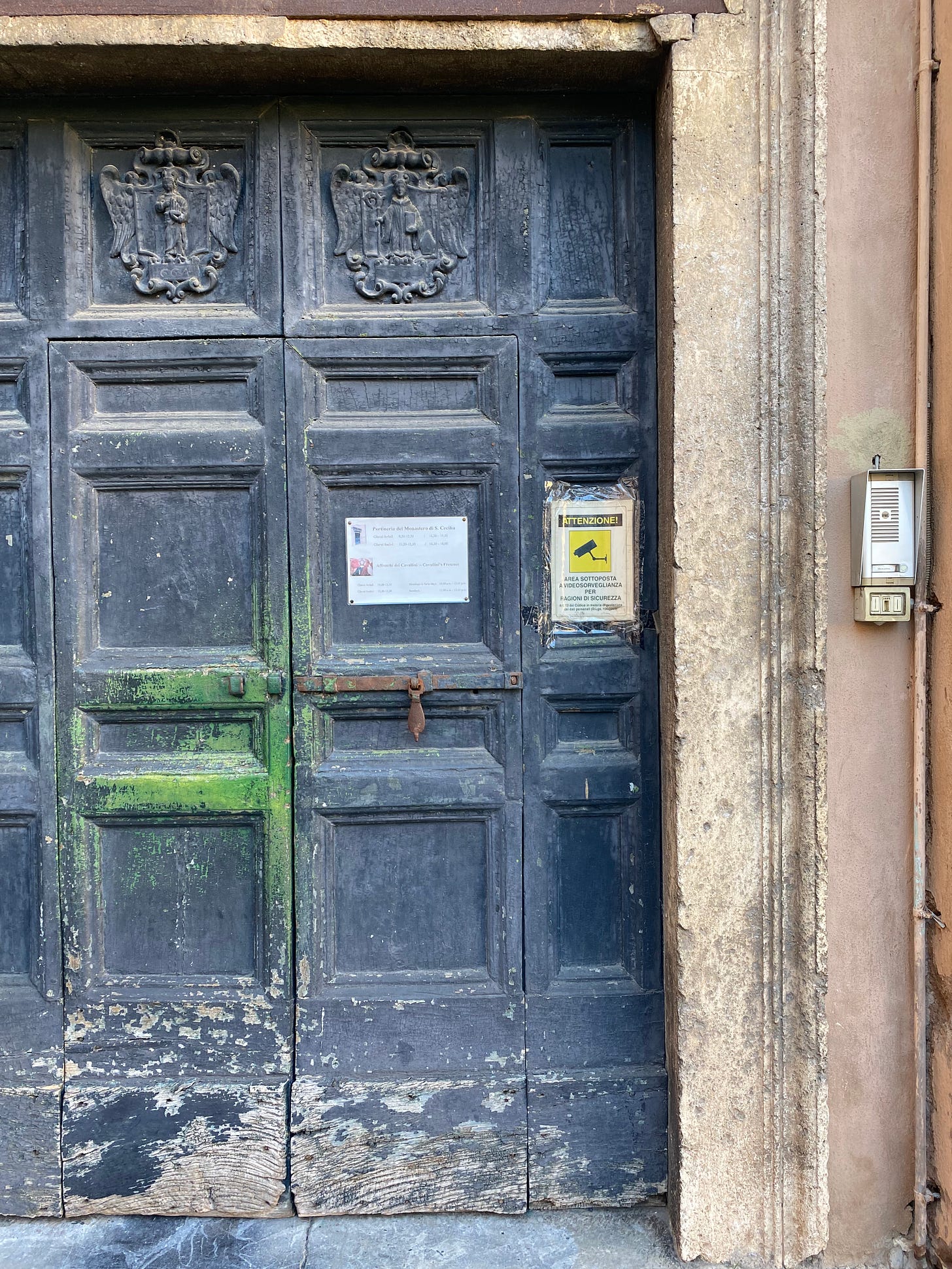
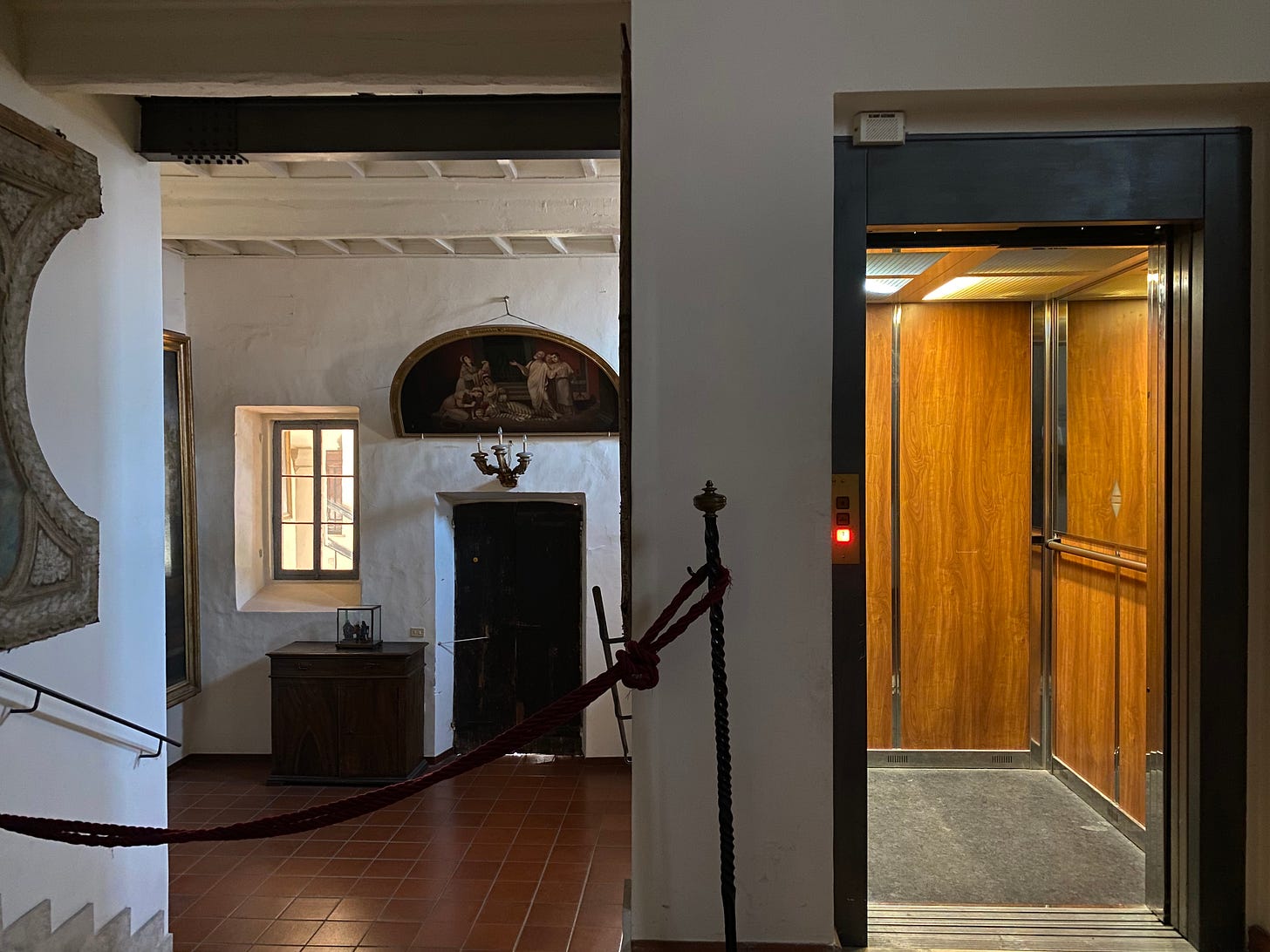
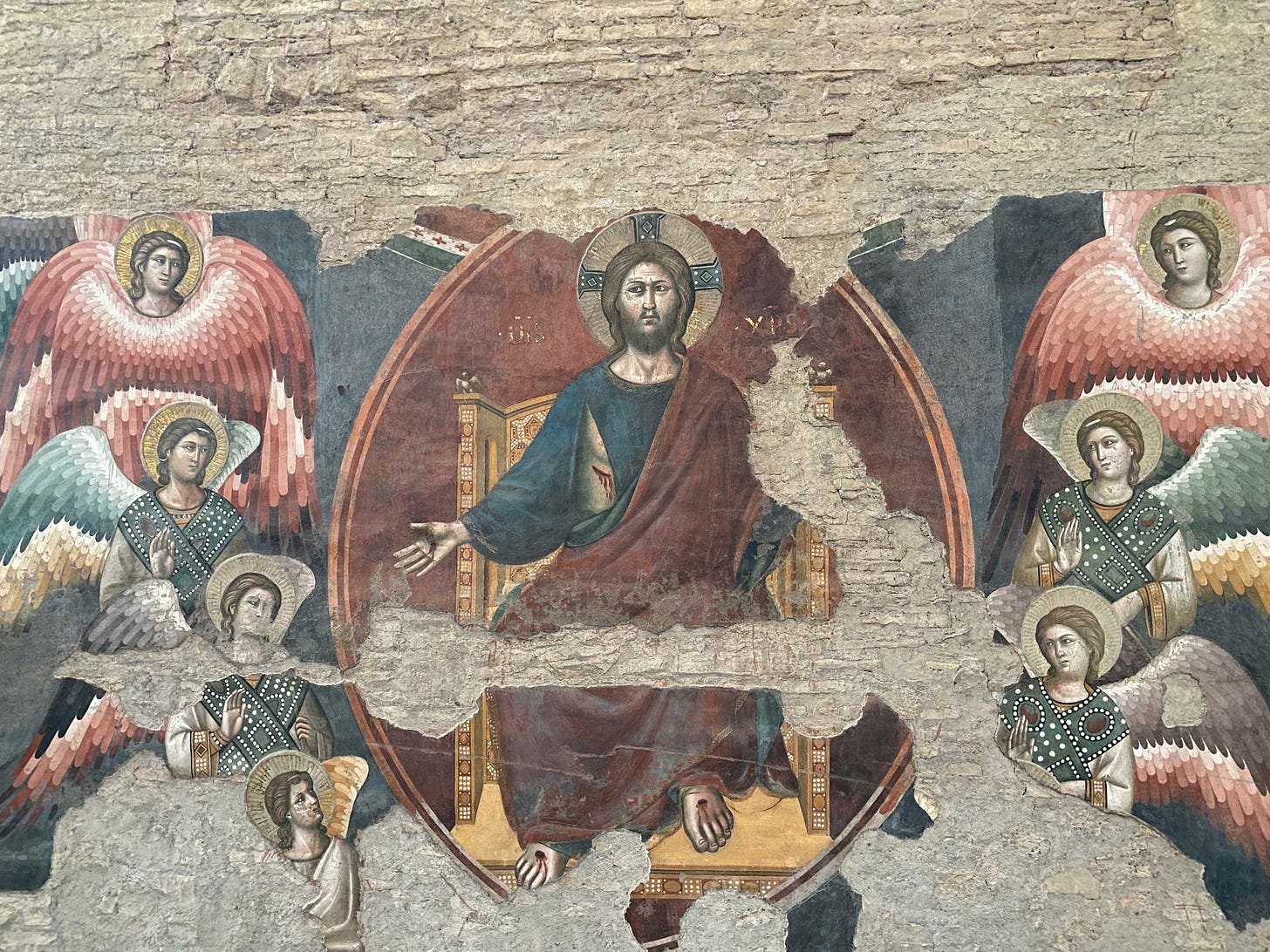



A terrifically fun post about frescoes that never cease to amaze me. The wings of the seraphim get me every time. And how interesting that the nuns leave you to your own devices up there!
What a great way to start my Substack subscription . I am delighted to be in Santa Cecilia with you. The sculpture of Cecilia took my breath away first time I saw it. Love the mosaics here & colourful angels! Excellent article, very informative & stunning pictures! Thank you.